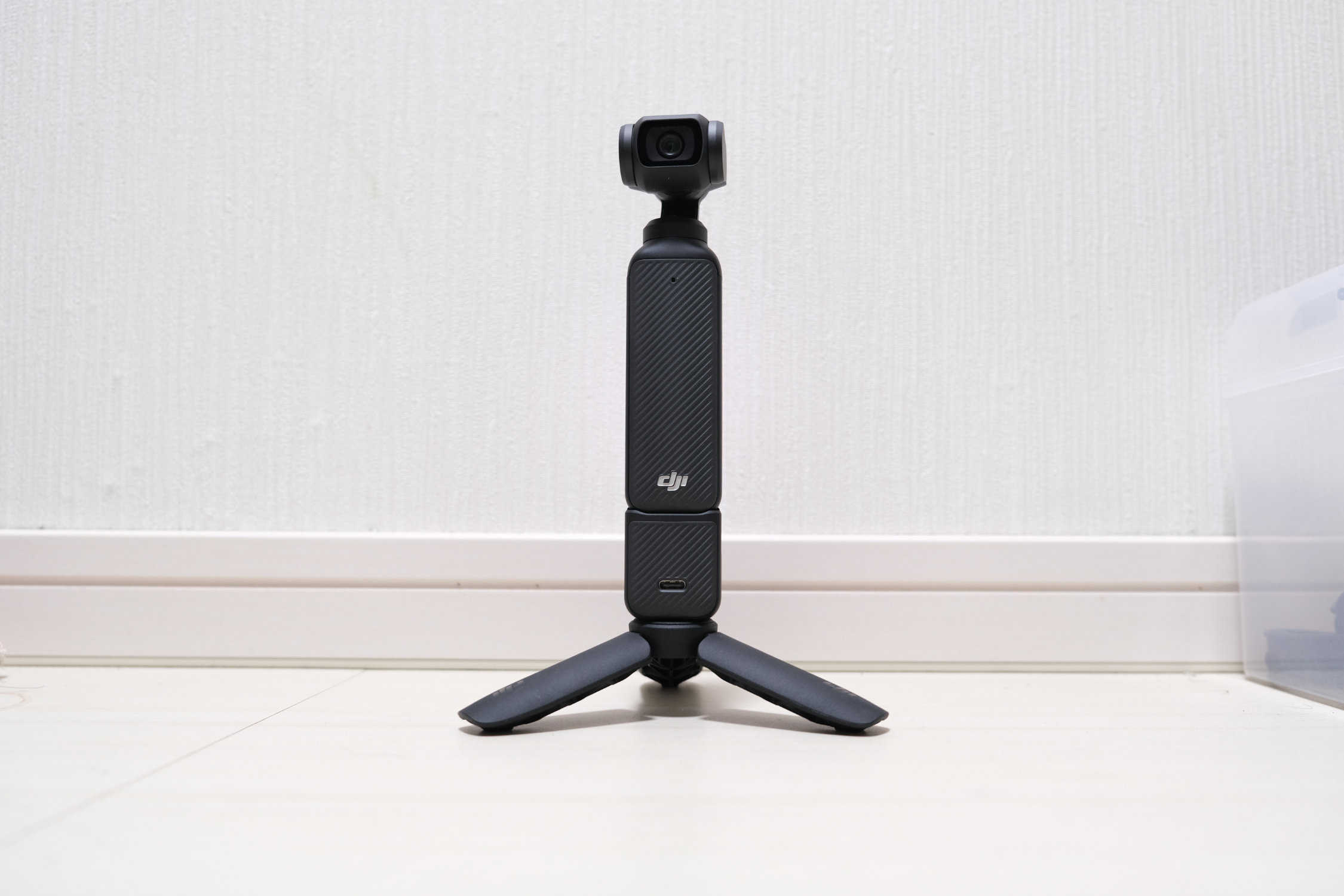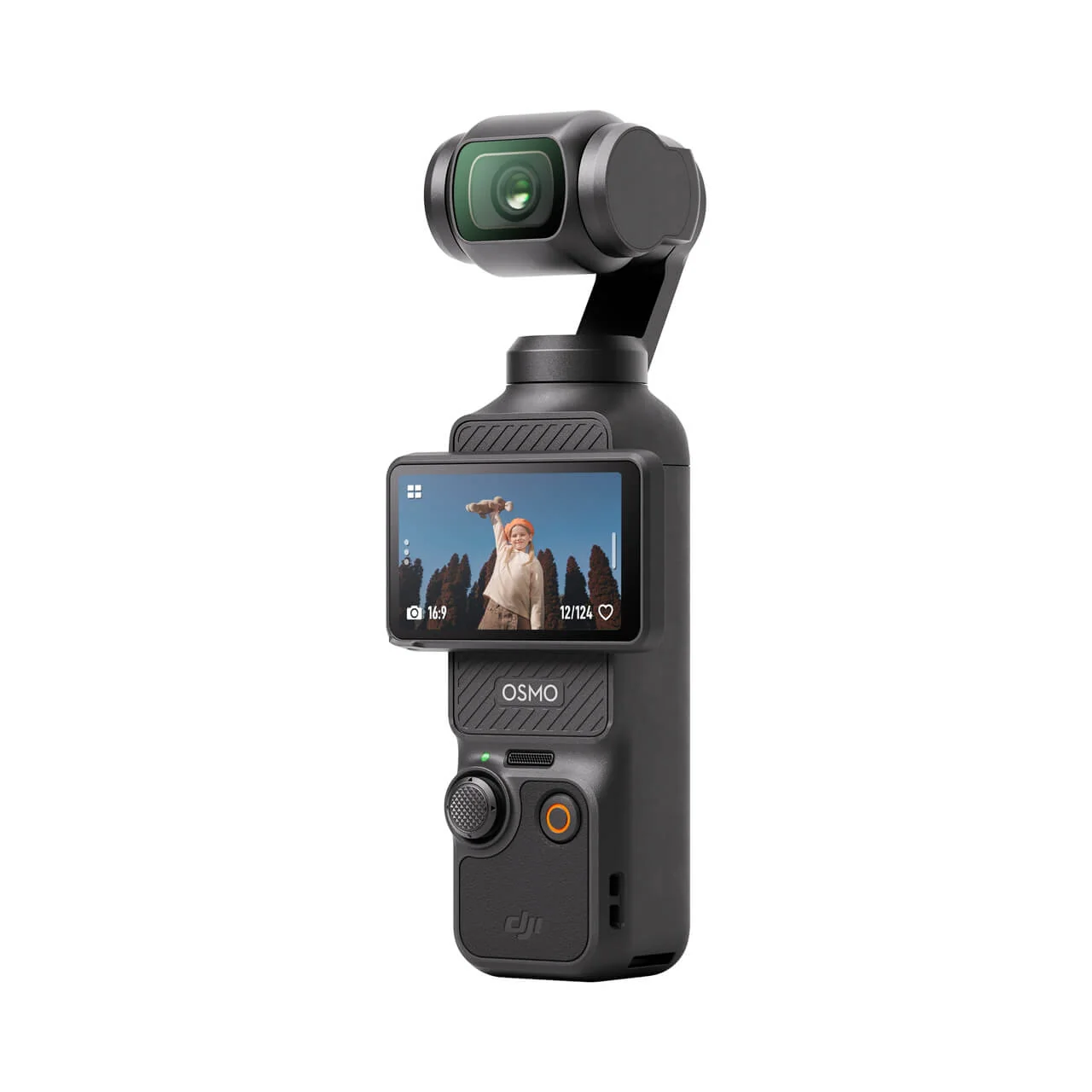The DJI Osmo Pocket quickly became one of the most popular handheld camera series for vloggers and content creators after its initial release in 2018. Now in its third generation, the Osmo Pocket 3 builds upon the compact, stabilized form factor while upgrading key components like the sensor, screen, and audio connectivity.
This new pocket-sized camera packs impressive specs like a 1-inch sensor, an F2.0 lens, a new 2-inch touchscreen display, 4K video at up to 120fps, and greatly improved Active Tracking and subject following abilities. With its integrated 3-axis gimbal stabilization, intelligent shooting modes, and extensive accessories, the Pocket 3 aims to be the ideal everyday carry camera for mobile filmmakers. In this review, we’ll take a closer look at what this pocketable powerhouse has to offer.
Table of Contents
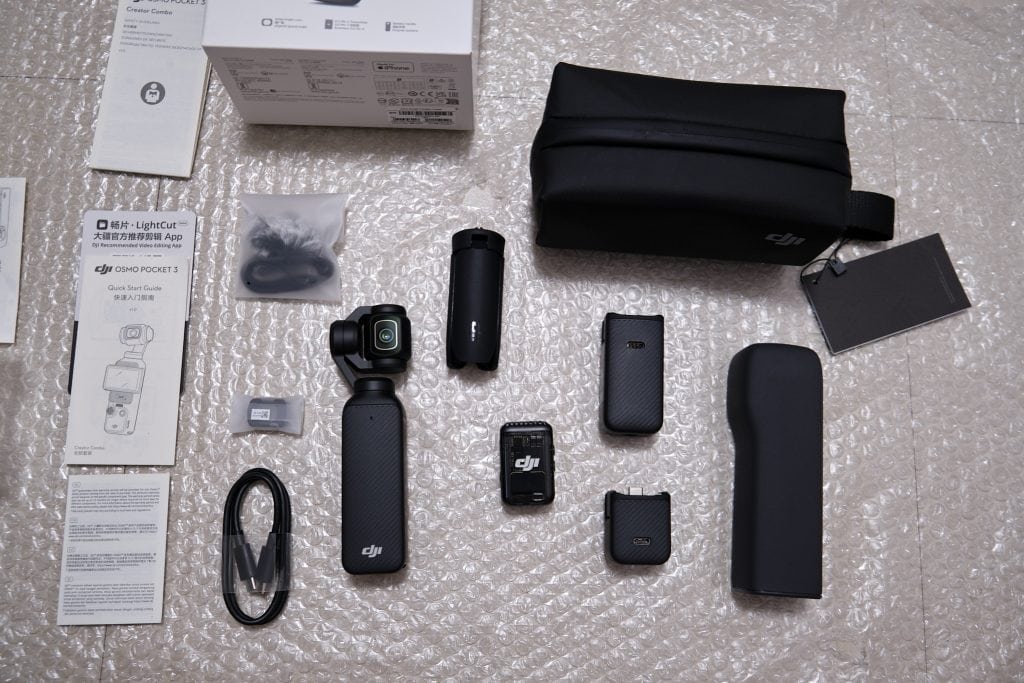
DJI Osmo Pocket 3
- 1-inch sensor for improved image quality and low light performance
- Smooth, stable 4K video at up to 120fps with 10-bit Dlog-M
- Intelligent tracking modes
- Extensive accessory ecosystem
- Not weather sealed or water resistant
- Modular design with handle/battery can get convoluted
- No optical zoom
Overview and Design
At its core, the Osmo Pocket 3 retains the same slender, handheld form factor of the previous Pocket and Pocket 2 models. It measures just 5.5 by 1.7 by 1.3 inches and weighs a mere 6.3 ounces. This is a lot smaller than any 1-inch sensor compact camera, and it somehow packs in a gimbal to.
This stick-like shape fits comfortably in your hand, with just two main physical controls. The Record button sits intuitively under your thumb, while the gimbal control stick is positioned nearby to allow easy access.
Despite the compact size, DJI manages to pack in a capable 1-inch sensor paired with a bright f/2.0 lens. The 20mm prime lens offers a wide angle of view that is well-suited for vlogging, travel videos, and other self-recorded clips. It can focus closely enough for product videos too.
Another returning and defining feature is the integrated 3-axis gimbal stabilization system. This mechanical stabilization is the key to achieving smooth footage without jitters when shooting handheld.
The most visibly obvious upgrade is the 2-inch rotating touchscreen display with a 16:9 aspect ratio. The touch controls are responsive, and the ability to rotate the screen 90 degrees comes in handy when swapping between horizontal and vertical shooting orientations.
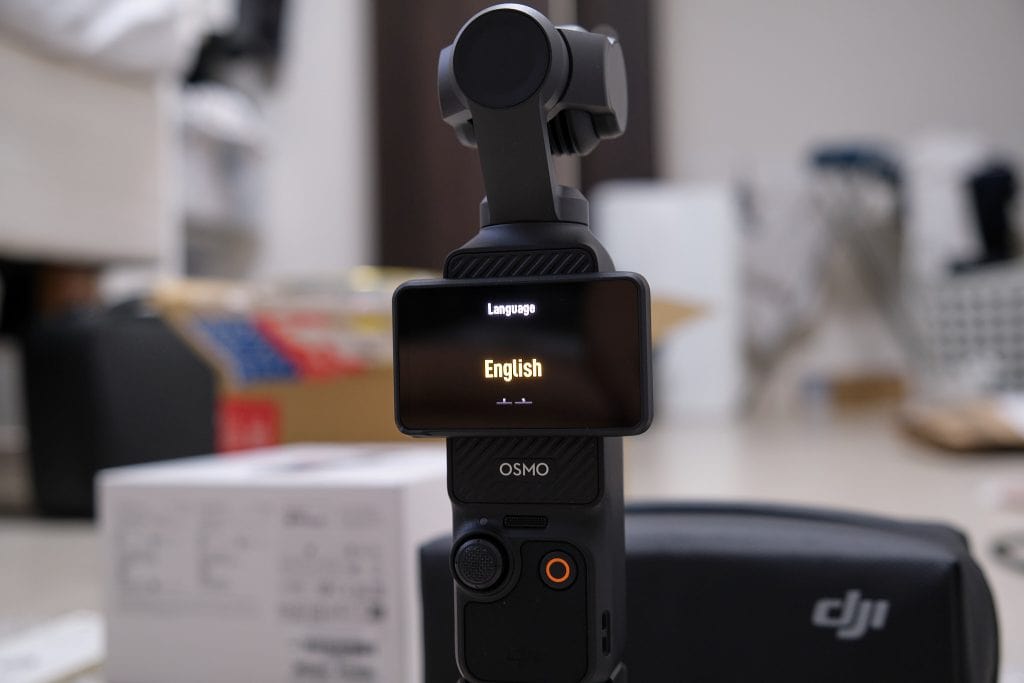
Getting Started
The DJI Pocket 3 has an excellent onboarding experience, because the new 2-inch touchscreen is big enough to provide a quick interactive tutorial upon first use. You don’t have to watch a video tutorial on the DJI Mimo app or YouTube in order to understand the basics.
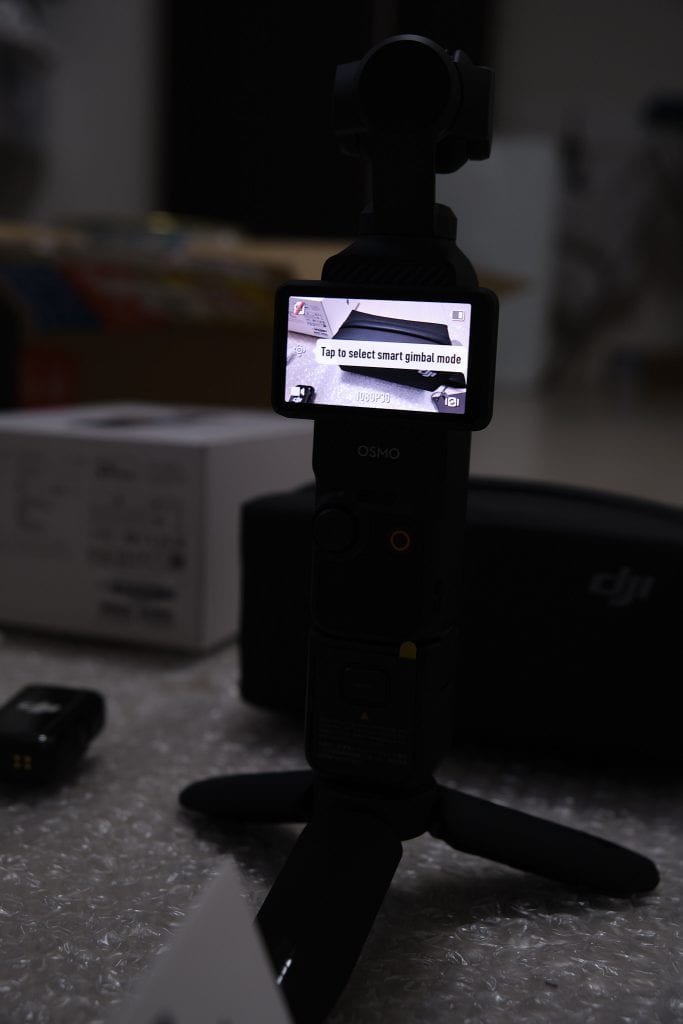
The only friction comes from having to download the DJI Mimo app and registering the device to your DJI account. If you’re on Android, you’ll have to sideload the app by scanning the QR code and installing the APK because you won’t find it on the Google Play store.
Besides that, you’re ready to start shooting because the camera comes pre-charged.
Build Quality and Weather Resistance
With an increase in price over its predecessor, the DJI Pocket 3 crosses into prosumer territory. The DJI Pocket is no longer that quirky fun little camera, it’s now a camera for serious creators.
And accordingly, DJI have made a camera with a more premium and robust feel. There’s a nice heft to it compared to the Pocket 2 and I expect it to hold up well over the years.
However, a big caveat is that the DJI Pocket 3 is not weather resistant or splashproof, and that drastically limits its potential. It’s an inherent problem with gimbals, and I’ve broken a gimbal from water exposure before and won’t be risking it again.
This means even if you’re not filming action sports involving water, you’ll still have to substitute the Pocket 3 out for your iPhone/Android or a GoPro-like action camera on rainy days.
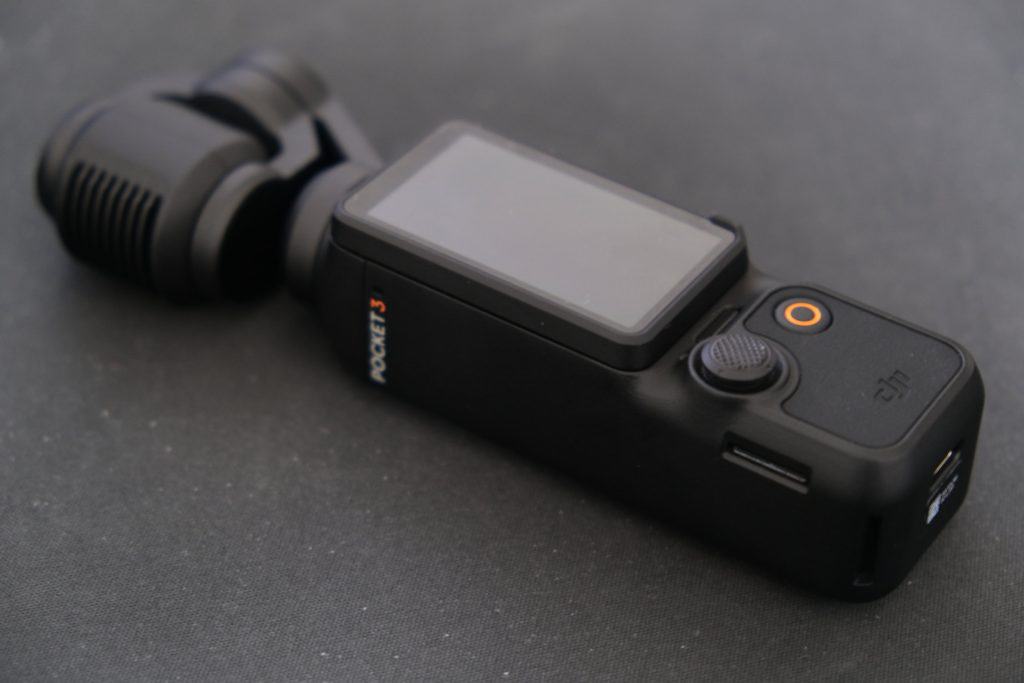
Ergonomics and Controls
Though compact, the Osmo Pocket 3 feels natural to hold and operate thanks to its ergonomic design. The textured handle ensures a secure grip, but the slim design can make single-handed operation feel slightly cramped during longer shooting sessions.
The clicky record button has a satisfying tactile response, making it easy to start and stop recording even when not looking at the camera.
The responsive control stick pans and tilts the integrated 3-axis gimbal with precision. You can control the gimbal at up to 180.0°/s, which is a fair bit faster than most phone gimbals which cap out at 120.0°/s. However, you can’t invert the tilt (up and down) control direction in the settings menu – an odd omission.
The bright 2” touchscreen simplifies changing settings, with intuitive swipe gestures to access menus and modes. Key shooting parameters are easy to adjust on the fly, aided by the rotating design. While touchscreen controls lower the learning curve, some users including myself will desire more physical buttons for changing key settings on the fly. Then again, this is a pocket camera we’re talking about, so I can’t exactly expect the same level of physical controls as my mirrorless camera.
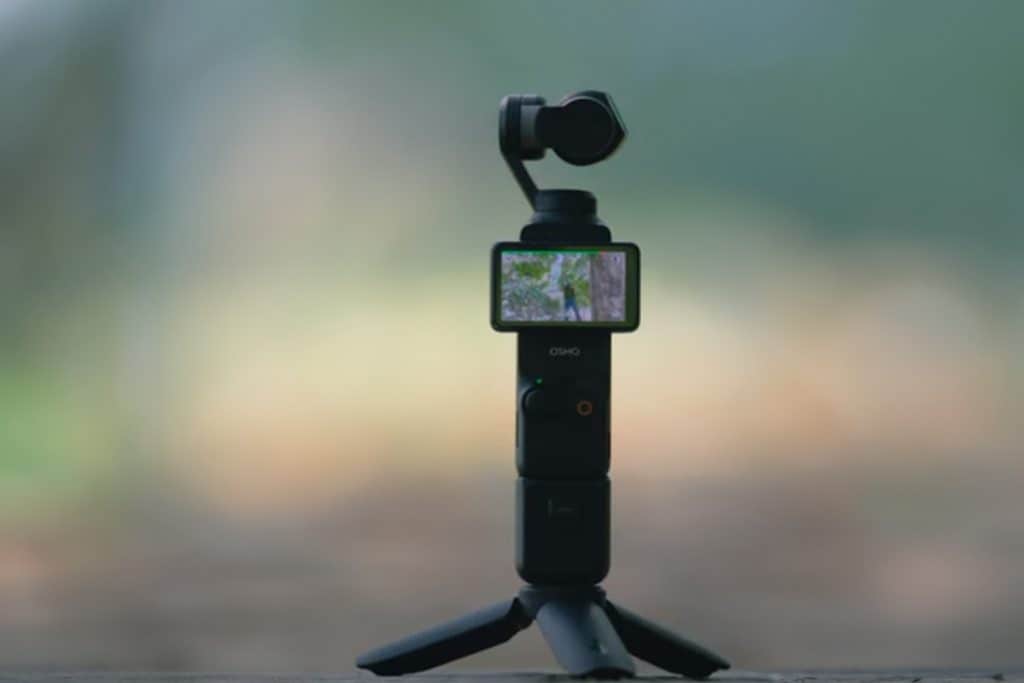
Video Quality
Footage captured on the Pocket 3 looks sharp straight out of camera with accurate colors and exposure right on the money. This latest iteration builds upon the solid foundations of past models with an upgraded 1-inch sensor capable of up to 4K 120fps recording. The Type 1-inch sensor is almost double the size of the 1/1.7-inch sensor found in the previous Pocket 2. Combined with the f/2.0 lens with 20mm focal length, the larger imaging sensor gives a boost to overall image quality with improved dynamic range and low light performance.
The enlarged photodiode area results in drastically improved low light performance. You can capture clearer, brighter footage in dim indoor settings where small sensors (such as those on phones or action cameras) typically struggle. Thanks to the high-end 20mm f/2.0 aspherical lens, optical quality lives up to the sensor’s potential with crisp detail and pleasing bokeh. This brings the Pocket 3 in line with premium compact cameras like Sony’s ZV-1 while retaining a more compact form factor. The faster f/2.0 aperture does mean slightly less light intake than the f/1.8 lens on the Pocket 2. However, the bigger 1-inch sensor still vastly outweighs the small difference in aperture when it comes to low-light performance.
Advanced users will appreciate capabilities like 4K video up to 120fps for buttery smooth slow motion in post production. The option to shoot in 10-bit Dlog-M opens up more possibilities for color grading footage to get the desired look in editing. While the finer detail and dynamic range understandably falls short of footage from high end APS-C or full frame cameras, the Pocket 3 video represents a massive leap forward in quality from smartphone and action camera alternatives.
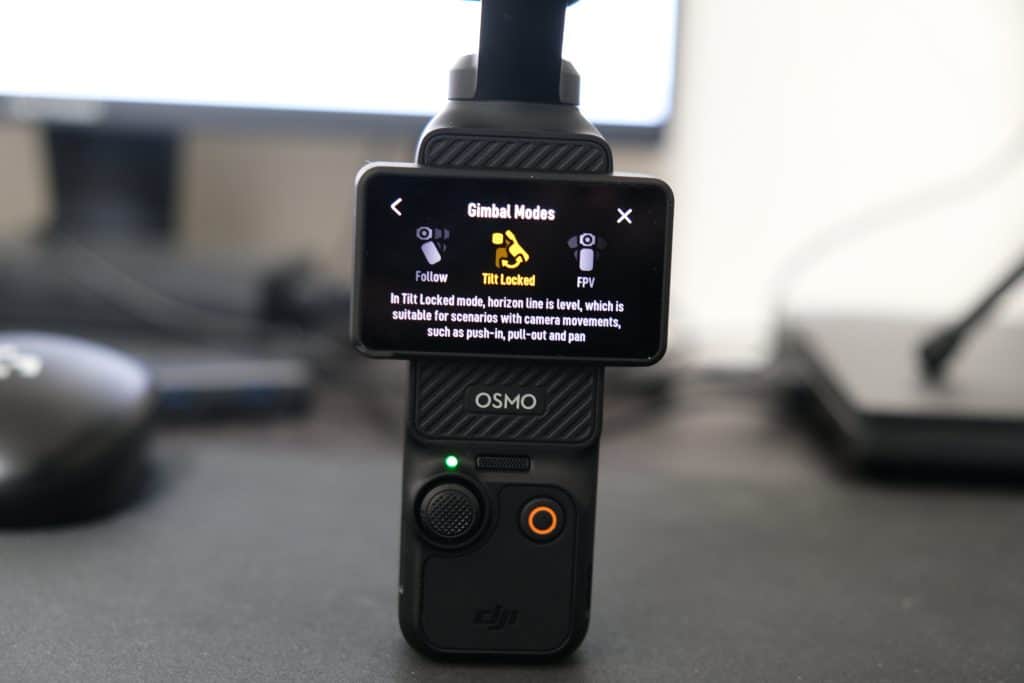
Gimbal Stabilization
Arguably the defining feature of the Pocket series is the integrated 3-axis mechanical gimbal for stabilization. This allows the camera to produce incredibly smooth video by actually moving the orientation of the lens itself to counter unwanted motion. The Pocket 3 inherits the same robust gimbal design while adding algorithmic improvements that increase stability and control.
Footage stays virtually shake-free when holding the Osmo Pocket 3 completely handheld, even when moving around. Sudden steps and changes in direction are compensated for immediately by the gimbal motors. This allows you to walk and record cinematic looking clips without needing any additional stabilization gear.
The gimbal wheel provides effortless, precise control to pan and tilt smoothly. Slow, fast, and medium speed settings allow adjusting the rate of camera movements. A double tap recenters the gimbal instantaneously to reframe a shot. Advanced users can also take advantage of motion timelapses, hyperlapses, and pre-programmed tracking shots executed automatically by the gimbal.
By relying on mechanical rather than digital/electronic stabilization technologies, the Pocket 3 avoids the aggressive cropping and image artifacts seen in other compact cameras. This allows shots to retain the full sensor resolution and field of view. For run-and-gun shooting, the gimbal delivers a massive advantage in achieving professional, stabilized footage without the bulk of a motorized gimbal rig.
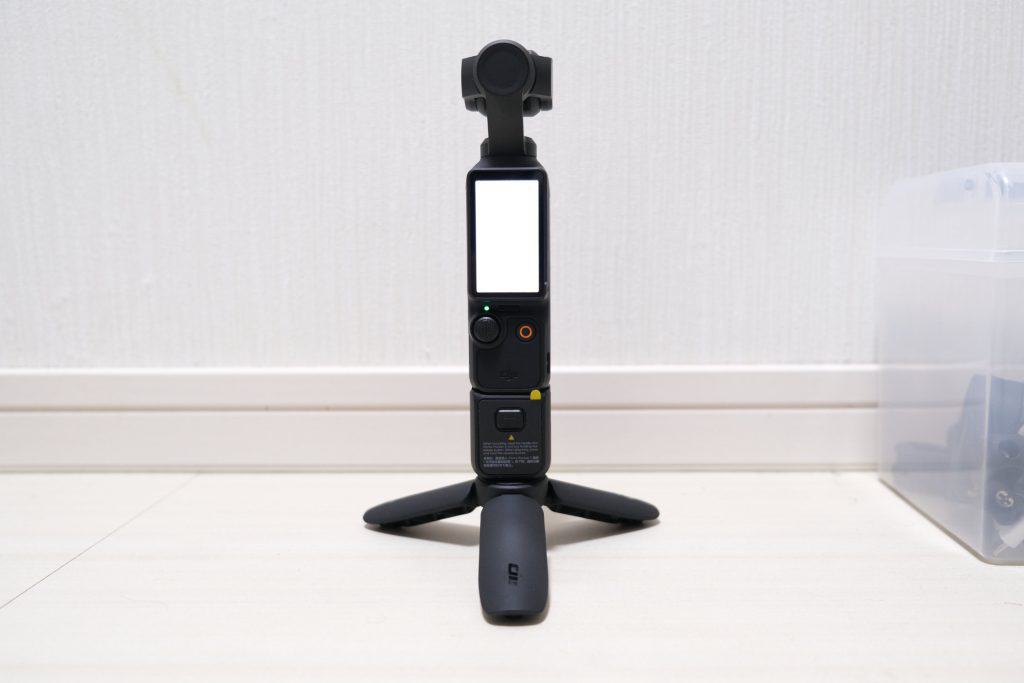
Intelligent Gimbal Tracking
The Pocket 3 integrates intelligent tracking technologies to automate complex camera moves. ActiveTrack 6.0 detects and follows selected subjects, keeping them properly framed in the center of the shot. The advanced computer vision algorithms handle tracking a subject smoothly, with natural looking pans and tilts of the 3-axis gimbal.
ActiveTrack 6.0 demonstrates further improvements over previous versions, and is able to maintain tracking even when a subject is temporarily obscured. This makes capturing usable footage of moving subjects much easier without an entire camera crew.
In addition to general subject tracking, the Pocket 3 offers extremely reliable face tracking optimized for selfie-style vlogging. When enabled, face tracking immediately recognizes faces entering the frame and shifts focus instantly. The gimbal then adjusts position to keep your face correctly positioned in shot, even as you move around. This works startlingly well, to the point where the Pocket 3 almost seems alive and self-aware.
Having a “virtual camera operator” handle these complex camera movements is game changing for solo content creators. With a tap, the Pocket 3 will automatically track and frame you correctly for monologues, interviews, and walking selfie clips hands-free. The autonomy enables staying focused on performing rather than camera settings. Face tracking also works wonderfully for pets, kids, and other unpredictable subjects by intelligently readjusting focus and position as needed.
While not foolproof, the tracking capabilities are mightily impressive coming from such a compact form factor. ActiveTrack and face tracking together provide content creators powerful creative assistance when filming without a dedicated camera crew. The set-it-and-forget-it approach lowers the barriers to getting pro-level stabilized footage of yourself or moving subjects.
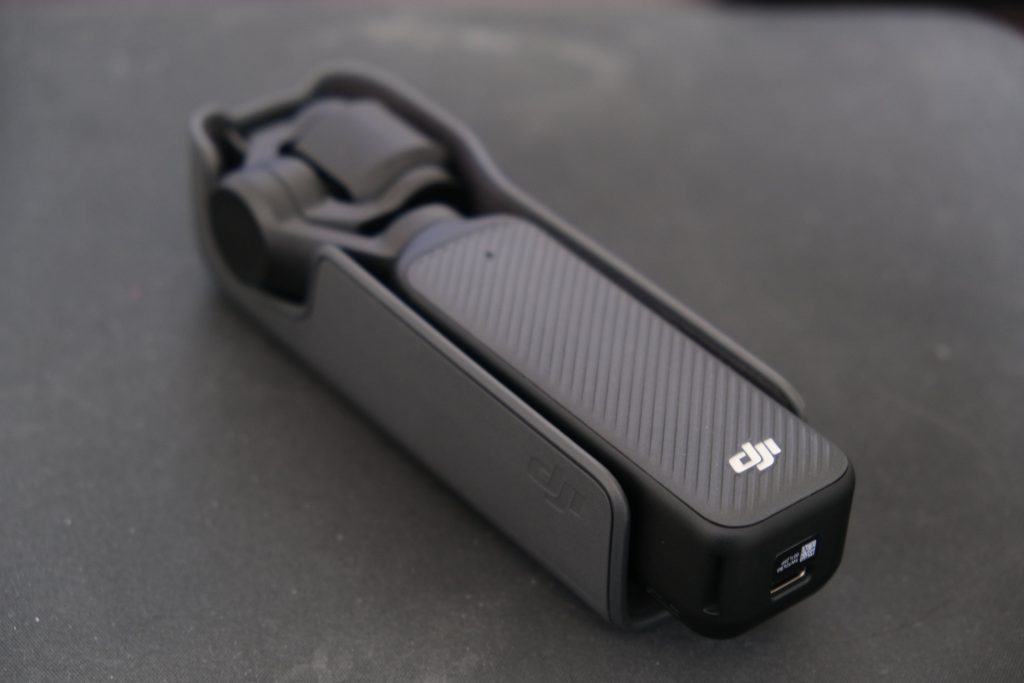
Subject Tracking vs The Competition
Reliable subject tracking is highly sought after by creators but the existing options are usually either lacking somehow or extremely complicated.
Up until recently phone gimbals like the Insta360 Flow or DJI Osmo Mobile 6 would have been my recommendation for fuss-free tracking, but the setup was far from perfect. You can’t preview the footage as you record because your phone is the camera, and because the instructions to the gimbal are sent over Bluetooth, there is a slight lag in the tracking.
Then came the Hohem iSteady M6 and iSteady MT2 gimbals which featured a standalone AI tracker, meaning a dedicated camera would be responsible for tracking rather than subject tracking which uses your phone or mirrorless camera’s camera feed. This solved the problem of tracking lag, but the AI tracker can only track people, and it’s just a lot of kit needed to accomplish a simple thing.
The DJI Pocket 3 comes with everything you need out of the box in a tiny package, with video quality that beats that of your phone. Unlike the other two solutions I just mentioned, you can also monitor your footage as you record using the DJI Mimo app. Finally, since it is using the ActiveTrack 6.0 algorithm, it can track a wider variety of subjects than just humans, including airplanes and dogs.
It still can’t beat a dedicated cameraperson, but as a solo content creator, there’s simply no better solution on the market right now.
Autofocus Performance
Quick, accurate autofocus is critical for vlogging and video applications. The Pocket 3 leverages both contrast and phase detection methods to achieve reliable autofocus suited for video. Focus locks on almost instantly, snapping subjects into sharp focus the moment they enter the frame. In dim lighting, the Pocket 3 still managed to lock focus fairly quickly, though unsurprisingly not as instantaneously as in bright light.
The autofocus reacts quickly to changes in distance, automatically adjusting focus even for fast moving subjects. Continuous autofocus while recording video is also impressive. The focus transitions smoothly without the pulsing and hunting common in many cameras. For run-and-gun shooting, being able to trust the quick, accurate autofocus is a major asset.
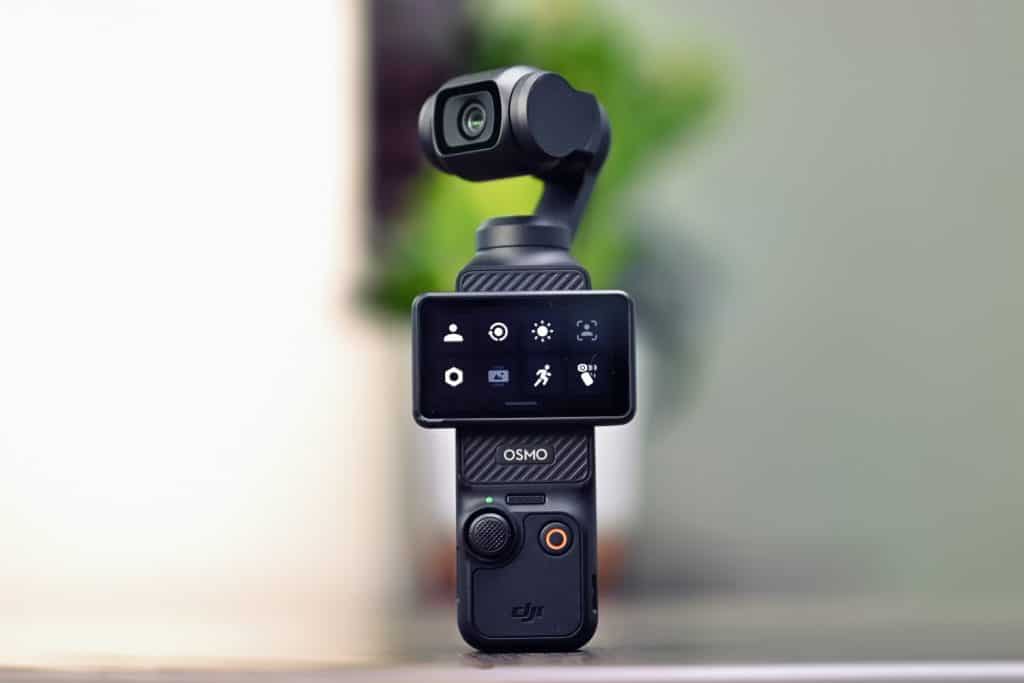
Audio Quality
Clear, high quality audio is just as important as stunning video when creating content. The Pocket 3 incorporates an array of microphones to capture crisp audio in a variety of conditions. Four built-in mics utilize noise canceling algorithms to isolate the main audio source and reduce background noise.
During vlogging-style footage, audio pickup is solid with voices coming through with clarity and detail. The noise cancellation works well even in public settings by homing in on the speaker’s voice and suppressing ambient sounds. DJI also added wind reduction capabilities to maintain clean audio during outdoor recording.
With the Creator Combo, you get the all-new DJI Mic 2 transmitter. This lav mic system is vital for picking up your voice when you’re some distance away from the camera. The mic transmits audio directly to the Pocket 3 without any external receivers required, meaning you end up with a very streamlined kit. However, it is also possible to use the Pocket 3 with other mics using a USB-C connection.
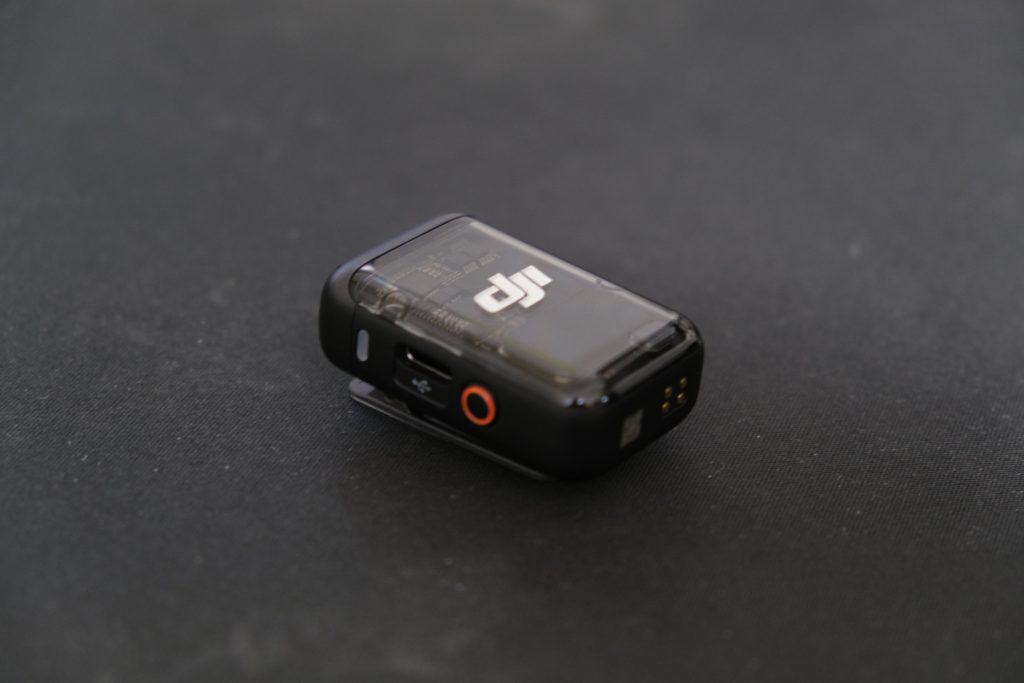
Stills Photography
While video takes center stage, the Pocket 3 offers respectable capabilities for still photos as well. The camera can capture 9.4MP images and besides JPEG you can also store them as raw DNG files for post processing flexibility.
As primarily a video camera, the Pocket 3 does not offer a full suite of photographic capabilities. You won’t find a flash hot shoe, optical zoom, or manual controls tailored to stills. However, the convenient form factor and decent quality images allow capturing shareable photos on the fly, beyond just filming videos.
Battery Life
Despite its compact form factor, the Osmo Pocket 3 packs in an impressive battery that delivers up to 166 minutes of recording time per charge based on DJI’s testing. The exact runtime will vary depending on factors like resolution, frame rate, use of stabilization and wireless functions. But in general, the Pocket 3’s battery life is robust enough for content creators to film for extended periods without being tethered to an outlet.
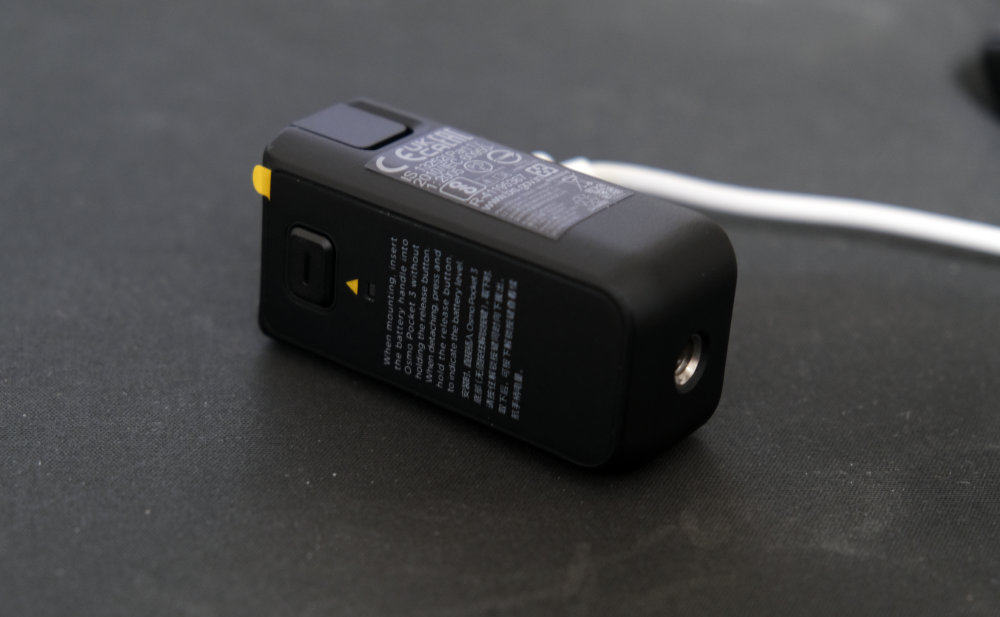
For longer shoots, the optional Battery Handle accessory with a built-in 950mAh battery will take you further. I haven’t personally run into battery issues for my purposes, but you can technically use the camera while charging if such a need arises.
Creator Combo And Other Accessories
One advantage of the DJI Pocket series is the extensive ecosystem of accessories to expand functionality. The Pocket 3 in particular benefits from new add-ons that boost production capabilities.
The first thing to note is that I’d highly recommend going for the Creator Combo over the standard package unless you are sure you don’t need the extras. It works out much cheaper than buying all the accessories separately.
And it’s the only option if you want to use the all-new DJI Mic 2 transmitter (lav mic) as you can’t currently buy it separately.
Here’s a comparison of the standard and creator combo offerings:
Standard
- Osmo Pocket 3
- Type-C to Type-C PD Cable
- Osmo Pocket 3 Protective Cover
- DJI Wrist Strap
- Osmo Pocket 3 Handle With 1/4″ Thread
Creator Combo
Everything in Standard plus:
- Osmo Pocket 3 Wide-Angle Lens (RRP $49)
- DJI Mic 2 Transmitter, Windscreen, Clip Magnet (RRP TBA)
- Osmo Pocket 3 Battery Handle (RRP $69)
- Osmo Mini Tripod (RRP $16)
- Osmo Pocket 3 Carrying Bag (RRP $35)
Note: A MicroSD card is not included in either package and the Pocket 3 has no internal memory so make sure you have one.
The Wireless Microphone Kit in the Creator Combo includes the aforementioned DJI Mic 2 transmitter for clear audio even when far from the camera. The Windscreen protects recordings from distracting wind noise when filming outdoors.
The battery handle accessory mentioned above also does a bit more than just give the Pocket 3 extra juice. It’s a direct substitute for the Osmo Pocket 3 handle, meaning it too comes with a USB-C port for connection to external audio devices and a 1/4″ thread at the bottom for various mounting options.
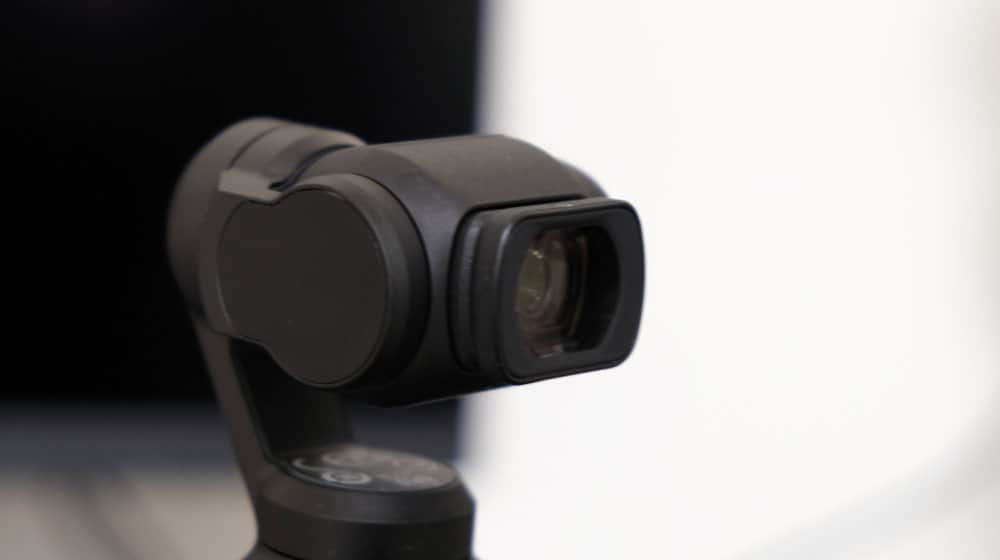
For capturing a wider field of view, the Wide Lens Attachment expands the FOV to 108° so that you can capture more in your frame. Installation is simple, it magnetically snaps onto the lens of the Pocket 3.
The mini tripod is an essential accessory for solo creators who want to record themselves, but it can of course be replaced with any 1/4″ tripod.
The carrying bag is also my preferred way of transporting the Osmo Pocket 3. I feel a bit wary just using the Osmo Pocket 3 protective cover because it really doesn’t seem to offer much protection!
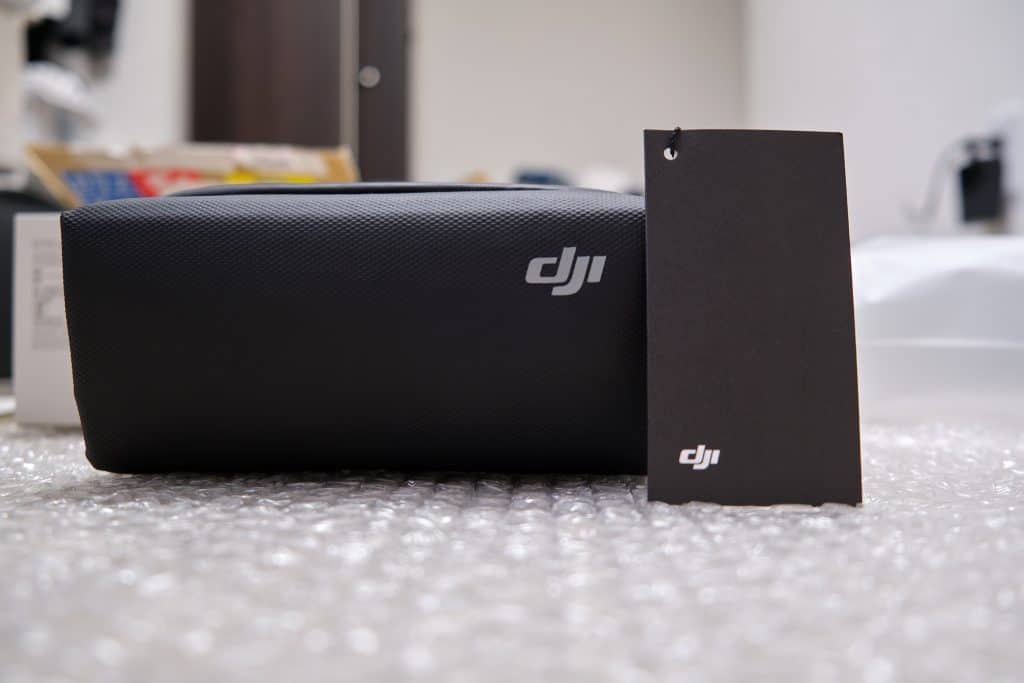
Other Available Accessories
Besides the accessories included in the standard and creator combo offerings, DJI also offers some other optional accessories.
The magnetic ND filter set ($59) can improve video recordings with harsh lighting, especially as the Pocket 3 has a tendency to overexpose in some situations.
Another lens attachment is the magnetic Black Mist Filter ($49) which can reduce blemishes and other skin imperfections during shooting.
Finally, there is the DJI 30W USB-C fast charger ($19) and Osmo Pocket 3 Expansion Adapter ($19) which gives your Pocket 3 a cold shoe and an action camera port.
Problems and Quirks
In this review so far, I’ve largely been singing the Pocket 3’s praises, with the notable exception of its lack of weather resistance – a significant drawback, admittedly.
This overwhelmingly positive feedback stems from the fact that the DJI Pocket 3 is an exceptional device, largely free from major shortcomings. That said, there are a few quirks and peculiarities in the DJI Pocket 3 that merit discussion.
1. Asymmetric range of motion
The Pocket 3 has the following ranges of motion in its three axes:
Pan: -240° to 63°
Tilt: -180° to 98°
Roll: -220° to 63°
This is a byproduct of the compact design of the Pocket 3, and doesn’t pose much of an issue for everyday recording.
However, it does mean you have to be extra mindful about reaching gimbal endpoints, because while there’s plenty of room for maneuver in one direction, there’s not so much in the other.
2. The Pocket 3 Protective Cover Seems Useless
This isn’t a complaint about the Pocket 3 itself, but rather the Pocket 3 Protective Cover accessory that is included with any purchase of the Pocket 3.
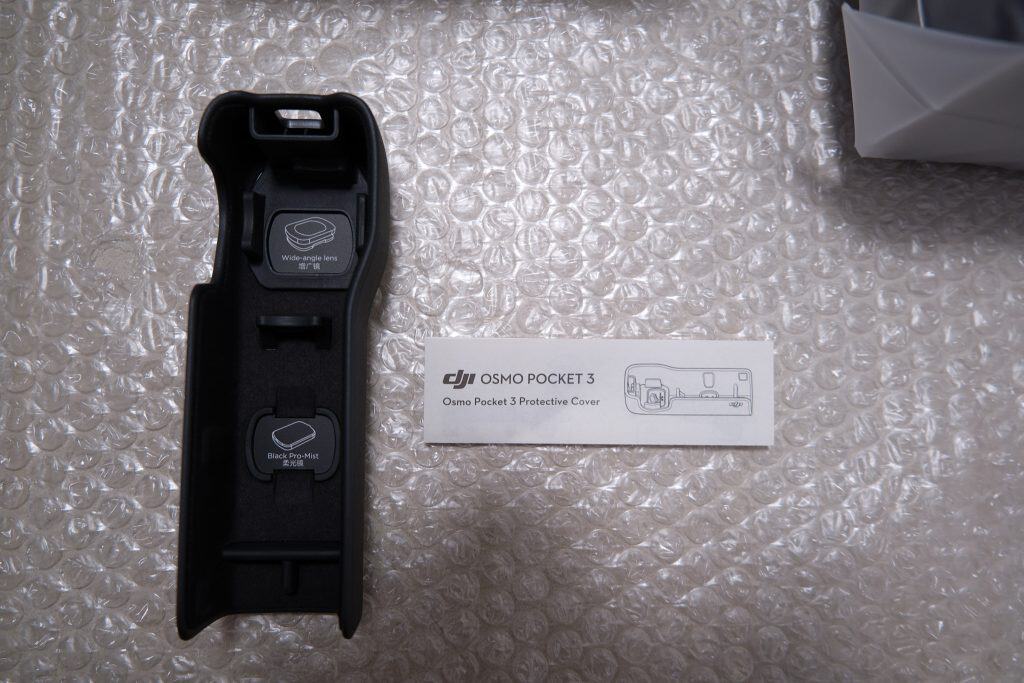
To be honest, the Protective Cover doesn’t fill me with confidence. The Pocket 3 slots into it, but it’s just as easy to take it out. I wouldn’t be surprised if the Pocket 3 somehow slipped out of the protective cover that was meant to be protecting it.
Secondly, the protective cover leaves over half the Pocket 3 completely exposed anyway. The backside and a bit of the bottom of the Pocket 3 are sticking out, so I’m not sure how useful the cover actually is.
Finally, it doesn’t combo with the Pocket 3 carry case. You have to choose one or the other as the Pocket 3 in its protective cover won’t fit in the carry case. I use the carry case, so the whole accessory is rendered redundant.
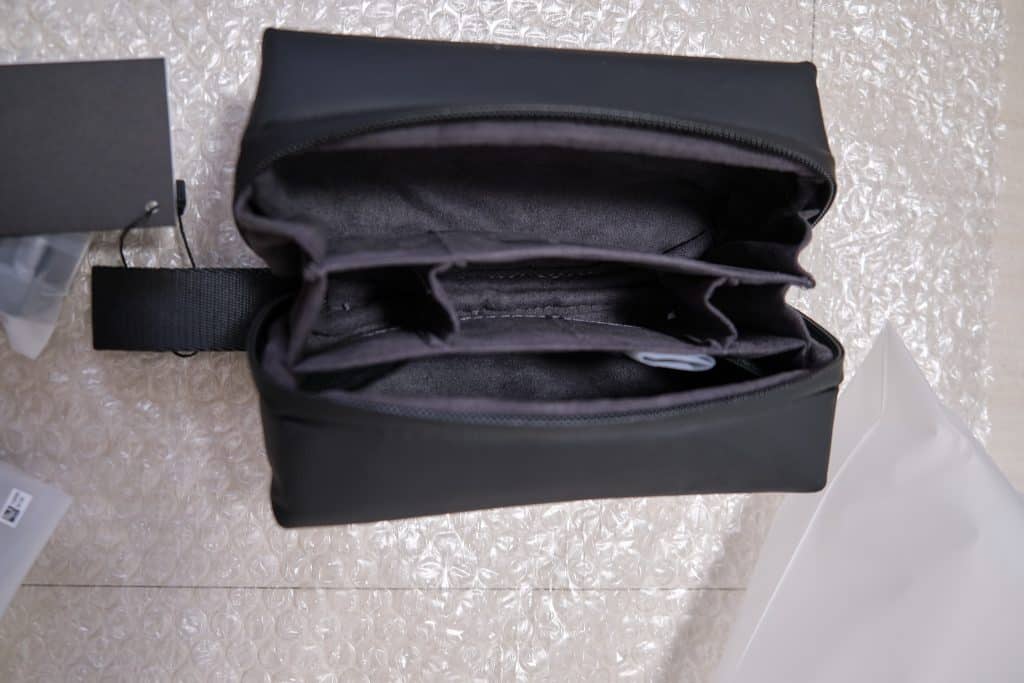
3. Handle and Battery Pack Lego
Another small complaint that borders on nitpicking, the Osmo Pocket 3 feels unnecessarily convoluted.
Let me explain, there are three ways to hold the Pocket 3.
First, and its most pocketable form, the Pocket 3 on its own without the grip or battery pack attached. This is slightly uncomfortable to handle because the grip is too short, but when you’re trying to minimize size it makes sense. However, you don’t have a 1/4″ thread at this point, so you can’t use it with a tripod.
Next up, with the handle attached. You now have a 1/4″ thread, and a slightly longer grip that makes the ergonomics better.
Finally, with the battery handle attached. You now have a 1/4″ thread, an even longer grip, and the extra battery juice.
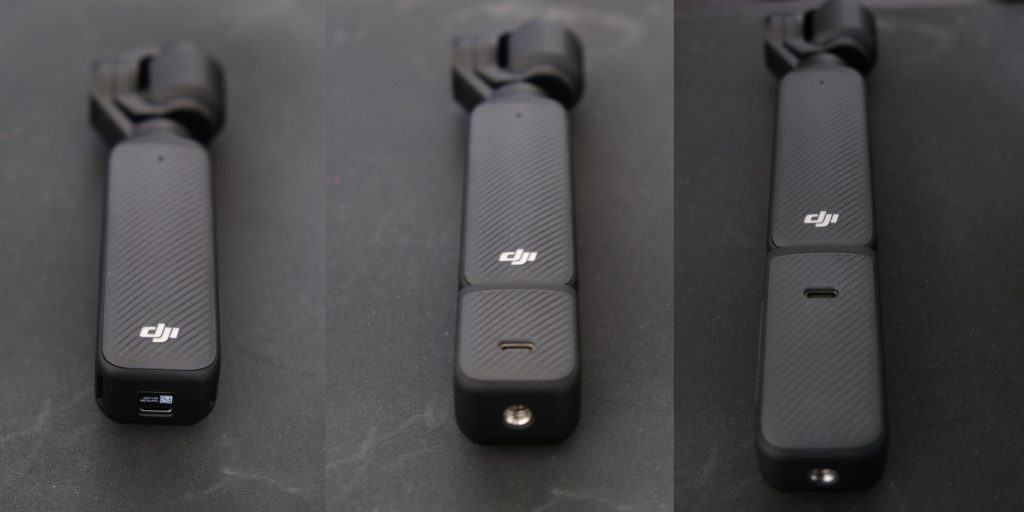
With three configurations that don’t make much difference, but just enough difference to make carrying all of them worth it, the Pocket 3 kit I carry around is more than I’d ideally like. I wonder if DJI could have come up with a more elegant solution that doesn’t involve so many modular parts.
Who’s it For
The Pocket 3 hits the sweet spot for vloggers, content creators, and mobile filmmakers who need stabilized 4K footage without the bulk of interchangeable lens cameras. The portable size and intelligent shooting modes make this an ideal everyday carry camera for travel and adventure.
While it doesn’t have the ruggedness of premium action cams like the GoPro or DJI’s own Osmo Action 4, it does benefit from a bigger sensor and improved image quality. Unless you’re filming intense sports, the Pocket 3 is recommended over them.
The latest iPhone 15 Pro and Pro Max capture stunning video so don’t expect anything better, but as a filmmaking tool the Pocket 3 does feel more natural in the hands. The bigger sensor also means it does perform better in lower light.
Verdict
With each new iteration, DJI manages to push the boundaries of what’s possible from a pocket-sized device. The Osmo Pocket 3 represents a creative tool that’s difficult to match in its combination of portability, stabilization, and video quality. Video creators now have gimbal-smooth 4K footage, advanced audio options, and a built-in virtual camera crew at their fingertips wherever they go.
DJI managed to carve out its own niche with its camera-on-a-gimbal Pocket series. While improvements in EIS have meant the advantages of mechanical gimbal stabilization are smaller than before, improvements to the camera means the Pocket 3 feels like less of a fun toy and more geared towards the serious content creators. But, that leap in power is joined by a leap in price, which might deter some of the Pocket’s original audience.
9/10

